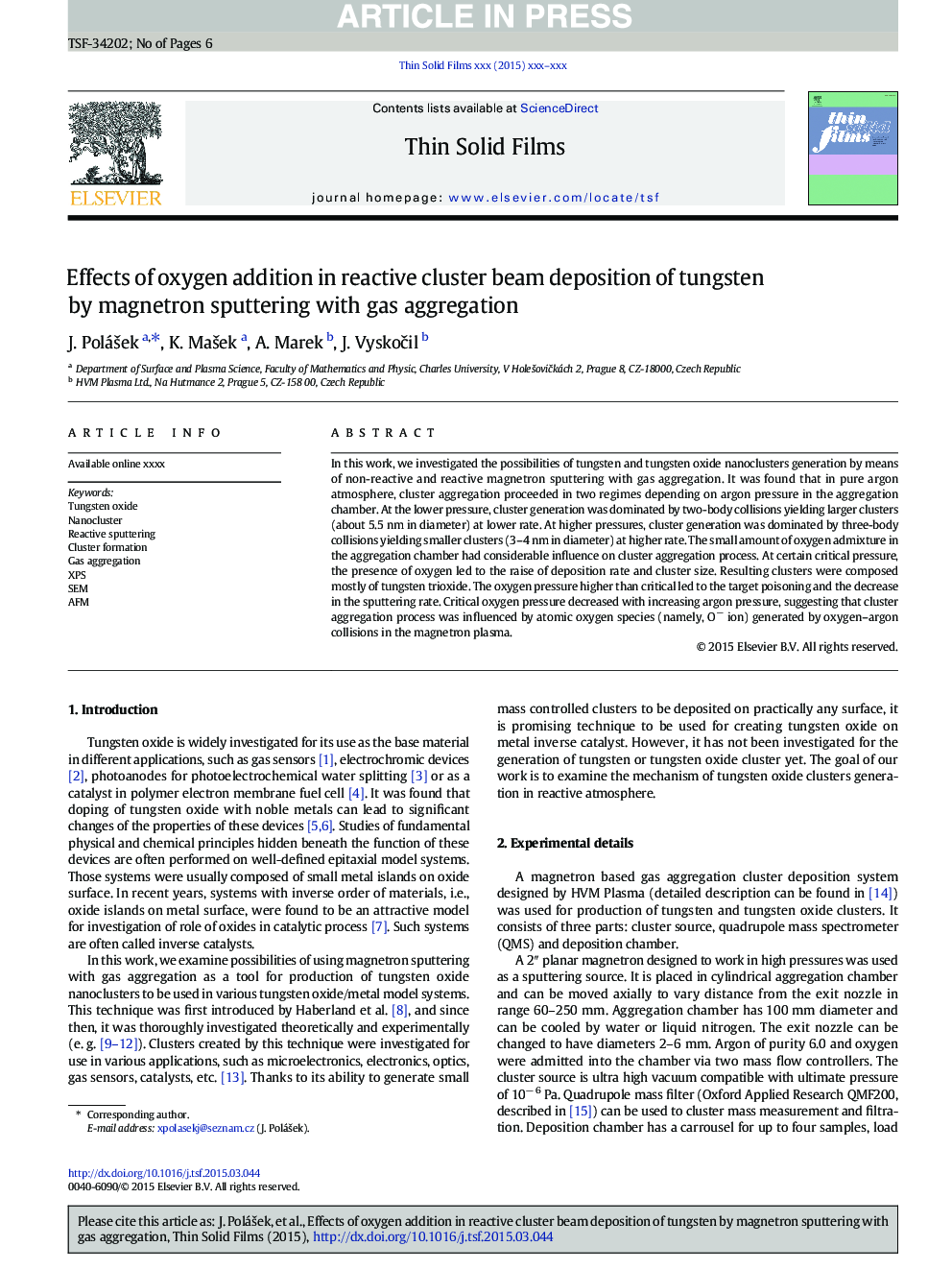| Article ID | Journal | Published Year | Pages | File Type |
|---|---|---|---|---|
| 10669609 | Thin Solid Films | 2015 | 6 Pages |
Abstract
In this work, we investigated the possibilities of tungsten and tungsten oxide nanoclusters generation by means of non-reactive and reactive magnetron sputtering with gas aggregation. It was found that in pure argon atmosphere, cluster aggregation proceeded in two regimes depending on argon pressure in the aggregation chamber. At the lower pressure, cluster generation was dominated by two-body collisions yielding larger clusters (about 5.5Â nm in diameter) at lower rate. At higher pressures, cluster generation was dominated by three-body collisions yielding smaller clusters (3-4Â nm in diameter) at higher rate. The small amount of oxygen admixture in the aggregation chamber had considerable influence on cluster aggregation process. At certain critical pressure, the presence of oxygen led to the raise of deposition rate and cluster size. Resulting clusters were composed mostly of tungsten trioxide. The oxygen pressure higher than critical led to the target poisoning and the decrease in the sputtering rate. Critical oxygen pressure decreased with increasing argon pressure, suggesting that cluster aggregation process was influenced by atomic oxygen species (namely, Oâ ion) generated by oxygen-argon collisions in the magnetron plasma.
Related Topics
Physical Sciences and Engineering
Materials Science
Nanotechnology
Authors
J. PoláÅ¡ek, K. MaÅ¡ek, A. Marek, J. VyskoÄil,
